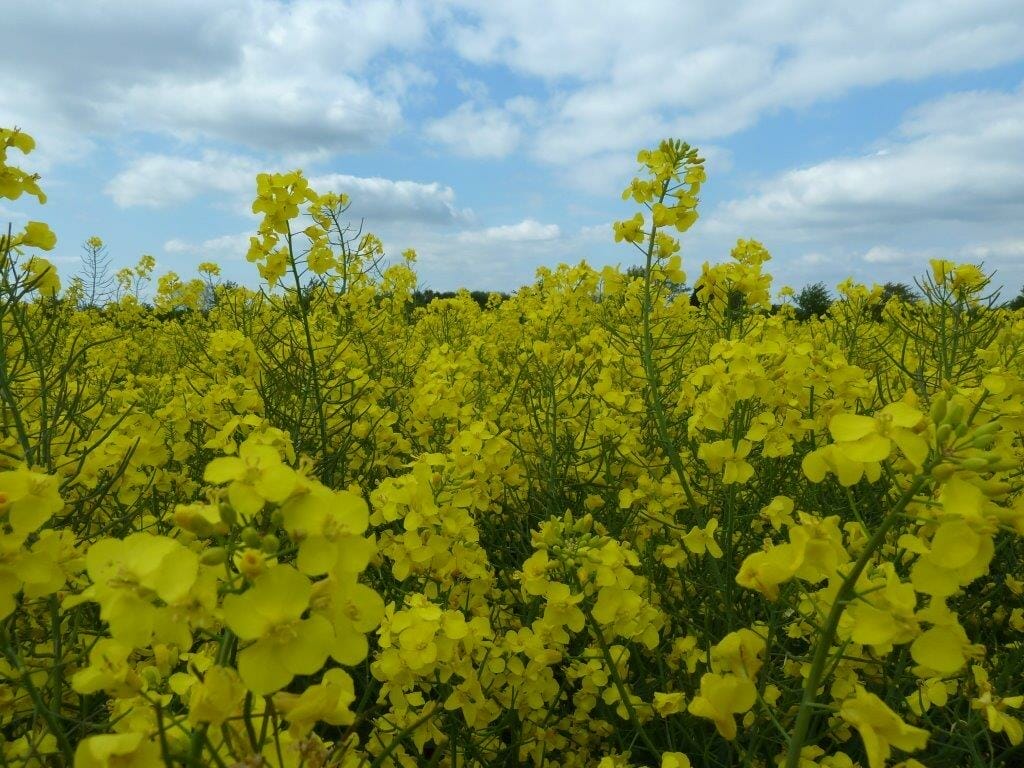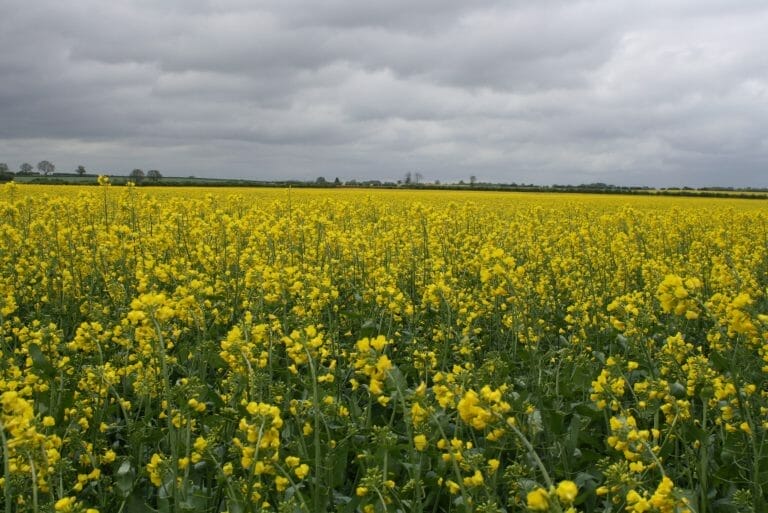This autumn’s favourable establishment conditions and relatively low incidence of CSFB, means there are some crops which more closely resemble kale than the struggling OSR crops we have seen in previous seasons.
Our own rooting and canopy studies can confirm this, with crops in October already more advanced in terms of biomass than crops observed in March of last year.
From our own work and our ongoing involvement with YEN, we know that OSR optimal plant numbers are between 25-40 plants/m2. In reality, low populations are difficult to establish and understandably growers compensate for losses with higher seed rates. But with fewer losses seen this season, plant populations in many crops are far higher than the optimum. These crops will require a different management to some of the smaller thinner crops we have seen in previous seasons, to reduce lodging and maximise light interception and achieve a higher percentage of yield potential.
Nitrogen Management
An AHDB project (PR447) investigating canopy management in OSR, identified that adjusting N based on canopy size (calculating N already tied up in the canopy), offers a yield increase of up to 0.36 t/ha in situations where the crop would have, if managed ‘traditionally’, produced a canopy that would have lodged.
The key principles are:
- Reduce first split in the spring to lessen stem growth, saving for a main dressing around stem extension
- Do not delay sulphur availability – select the right product and apply as much of the sulphur required as possible, with the first split
- Know how much N is in your canopy and adjust rates accordingly. Dose response curves still show optimum N in the crop to be 220 kg/ha. PR447 outlines that only 60% of spring applied N is utilised by the crop, so this must also be adjusted for
To calculate crop N:
- Use GAI (either satellite or mobile phone apps). As a rule, 1 unit of GAI is equivalent to 50 kg/ha nitrogen in the canopy
- Fresh weight method – NIAB TAG identified a strong correlation between fresh weight and Canopy N, with every 1 kg of above ground fresh weight/m2 equating to 55 kg/ha N in the crop
Growth Regulators
In crops with high populations or GAI over 0.8, consider applying a PGR. In the spring, these can be fungicides that have a growth regulatory effect such as Tebuconazole or Metconazole, or specialist growth regulatory products such as Caryx (containing Metconazole and Mepiquat chloride).
In dense crops with high plant numbers, branches are formed from the top of the plant down, and as the first branches start to extend, they block sunlight to the bottom of the canopy. This can cause branches to abort and prevent flowers or pod production, leaving crops with a relatively thin top-heavy band of pods, which makes the crop more susceptible to lodging.
In crops treated with a PGR, the top branches (or Raceme) are shortened. This allows for more light interception through the canopy, allowing a deeper layer of pods and branching. Additionally, this allows for better penetration of fungicides at flowering, which can help prolong green leaf duration, which is heavily associated with reaching a greater percentage of yield potential.

































